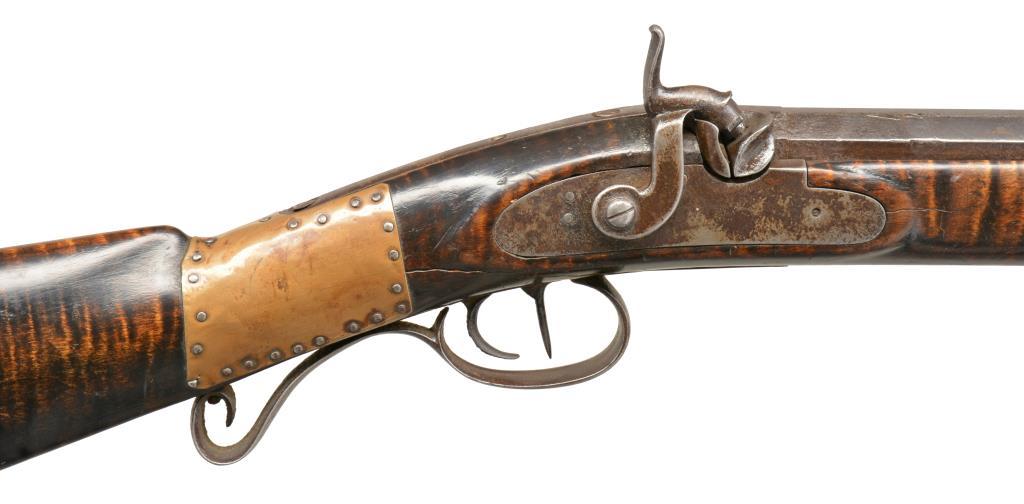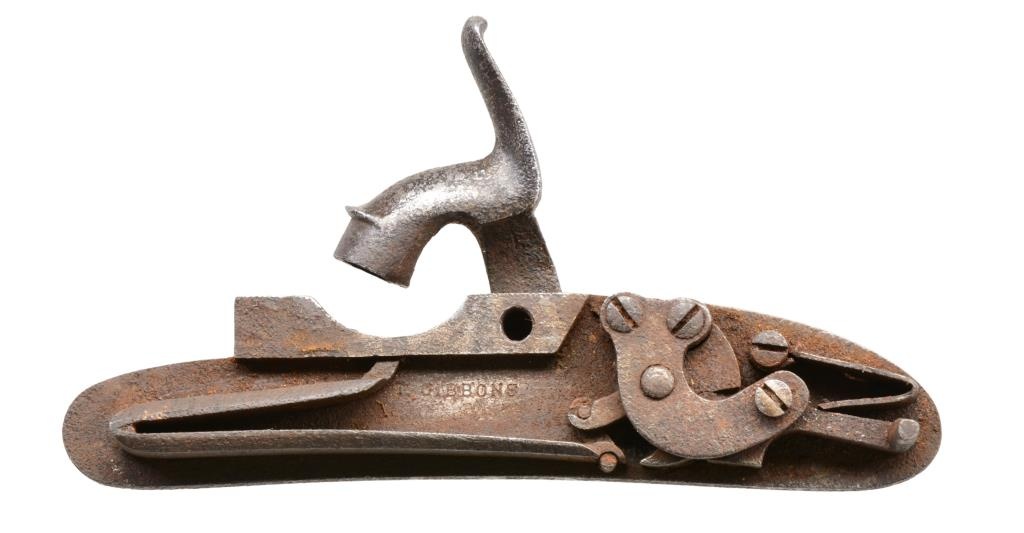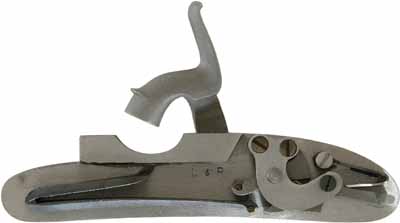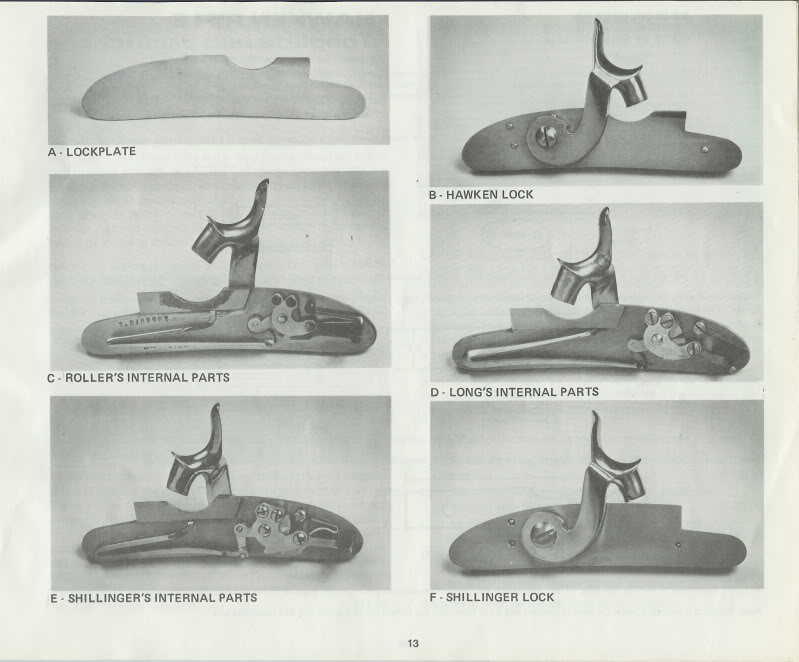plmeek
40 Cal.
Back at the beginning of this year, I started a thread I titled,
Do You See Anything Suspicious About This Rifle?
https://www.muzzleloadingforum.com/threads/do-you-see-anything-suspicious-about-this-rifle.108733/
I've come across another Hawken rifle that recently sold at auction that also looks suspicious to me.

https://www.proxibid.com/Firearms-M...RCUSSION-PLAINS-RIFLE/lotInformation/44252261
The lock on this rifle looks an awful lot like an L&R Hawken lock.

The internals look exactly like an L&R lock and the hammer resembles the L&R hammer. The "T. GIBBONS" stamp is located where the "L&R" stamp would normally be.

L&R Hawken Lock

Now, I haven't seen very many original T. Gibbons locks, but the one that Art Ressel used to cast his Hawken lock plate had the stamp more towards the nose. There is a drawing of another in Baird's first book (pg 54) that has the stamp located lower between the main spring arms and almost directly under the bolster cutout. Seems convenient
that this lock has the stamp where the L&R stamp would normally be.

I don't think these rifles are fooling any serious collectors because this latest one sold for only $10,500, which is well below what an original rifle would normally sell for. On the other hand, someone is paying a lot of money for what likely is a contemporary rifle.
Phil Meek
Do You See Anything Suspicious About This Rifle?
https://www.muzzleloadingforum.com/threads/do-you-see-anything-suspicious-about-this-rifle.108733/
I've come across another Hawken rifle that recently sold at auction that also looks suspicious to me.

https://www.proxibid.com/Firearms-M...RCUSSION-PLAINS-RIFLE/lotInformation/44252261
The lock on this rifle looks an awful lot like an L&R Hawken lock.

The internals look exactly like an L&R lock and the hammer resembles the L&R hammer. The "T. GIBBONS" stamp is located where the "L&R" stamp would normally be.

L&R Hawken Lock

Now, I haven't seen very many original T. Gibbons locks, but the one that Art Ressel used to cast his Hawken lock plate had the stamp more towards the nose. There is a drawing of another in Baird's first book (pg 54) that has the stamp located lower between the main spring arms and almost directly under the bolster cutout. Seems convenient
that this lock has the stamp where the L&R stamp would normally be.

I don't think these rifles are fooling any serious collectors because this latest one sold for only $10,500, which is well below what an original rifle would normally sell for. On the other hand, someone is paying a lot of money for what likely is a contemporary rifle.
Phil Meek






